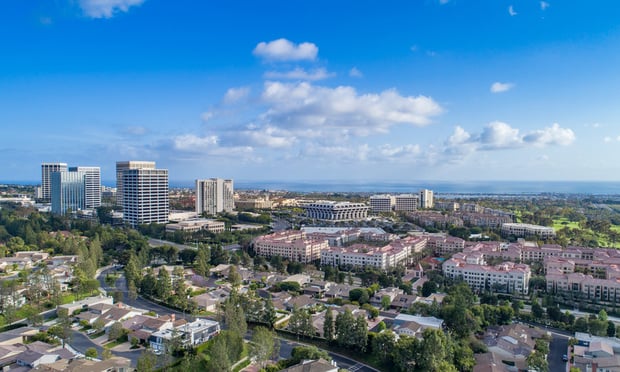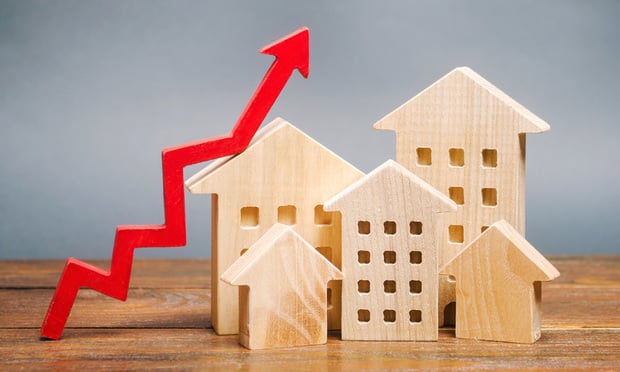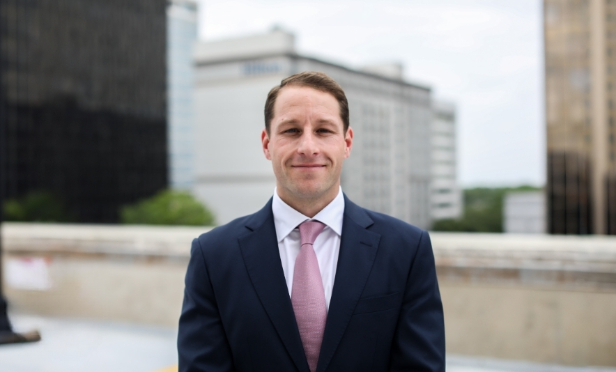 Phil Voorhees, EVP, CBRE National Retail Partners – West
Phil Voorhees, EVP, CBRE National Retail Partners – West
It may sound off-trend, if you follow the narrative around retail, but CBRE recently brokered the deal of Edinger Plaza, a 155,000-square-foot power center in Huntington Beach, for a record price in the market. According to industry sources, as the pricing was not disclosed, the property traded hands for $65.5 million. However, and again, if you follow the narrative around retail, the deal may have been an anomaly. Retail pricing is already off the 2015 peak, and with interest rates rising, they will likely continue to trend downward.
“Over time, cap rates track interest rates, specifically the U.S. 10-year treasury yield The 10-year-treasury yield is moving upward considerably, more than 1% since early September in 2017,” Phillip D. Voorhees, an EVP at CBRE, tells GlobeSt.com. “We're seeing cap rates up slightly year-over-year on core retail assets, perhaps 20 to 40 basis points, producing lesser pricing as price moves inversely to the cap rate. For off-core assets, particularly larger projects of $35-plus million in size in secondary and tertiary markets, pricing is considerably off the cycle peak during the second half of 2015. As a primary, coastal market with inherent supply constraints, a nearly perfect climate, and with an enviably diverse economy, pricing will hold up better in Orange County than in most other markets if cap rates continue expanding.”
However, some retail properties have been exempt from this trend, able to capture premium and record pricing. Voorhees says that the highest quality properties in coastal and urban-trade areas have been able to command high pricing, even in this struggling retail market. “That means credit-tenant single-tenant, net-leased investments, the best pad and strip retail centers with food and beverage, health and fitness or service tenancy, and neighborhood shopping centers with an owned, high-performing grocery anchor,” he says. “What made pricing at Edinger Plaza exceptional was the quality of the opportunity. If Edinger Plaza was anchored by a high-performing Whole Foods, for instance, the cap rate likely would have been in the low-to-mid 4% cap rate range. Without the grocer, however, the REIT investors were unable to engage. Edinger Plaza is also a large asset, unapproachable by size for many private investors. This created the opportunity to make this irreplaceable acquisition at a wide cap-rate spread compared to a grocery-anchored core asset.”
Looking ahead into next year, Voorhees expects that prices will follow interest rates, wherever they go. “Inflationary pressure is mounting with a 4% GDP increase during Q2 2018. Correspondingly, the Federal Reserve chose to raise short-term rates to cool an increasingly hot economy,” he explains. “The spread between cap rates and the 10-year treasury yield remains wider than at the peak of the last cycle, so we expect lightning will continue to strike on select assets. This said, it's tough to predict where lightning will strike, even standing in the middle of a storm, let alone on a clear day. We expect strong transaction volume in 2019. As an owner, if you have plans to sell in the next three years, you'd be mistaken not to consider getting to market now.”
While these dynamics might encourage sellers to bring properties to market, buyers are remaining cautious. “Capital is being more disciplined and studious about retail opportunities,” says Voorhees. “In fact, a strong case can be made that cap rates on non-core retail expanded too much in 2017, creating a buying opportunity relative to the other commercial asset classes. Fundamentals are perfectly aligned for best-ever pricing in industrial and multi-family properties in Southern California at this point. The negativity and fear-mongering about the future of retail in the national news media caused a pullback, resulting in a corresponding opportunity. The knee-jerk, herd mentality of the market caused a quick pullback that feels like an overreaction in retrospect.”
Overall, though, Voorhees says that there is an opportunity for everyone in this market. His advice to buyers is to remain prudent and focus on fundamentals. “Good markets or bad, tailwinds or headwinds, great deals will be found and captured. If inflation is on the horizon, it's a great time to own fixed assets with long-term, fixed-rate debt. If you are not selling, you're effectively buying, so refinancing now to lock in rates feels prudent,” he says. “More equity and less debt, and debt for a longer, fixed-rate term provide a hedge against market volatility. Ignore the headlines and focus on the fundamentals. If you do, you'll find opportunity in today's market.”
Want to continue reading?
Become a Free ALM Digital Reader.
Once you are an ALM Digital Member, you’ll receive:
- Breaking commercial real estate news and analysis, on-site and via our newsletters and custom alerts
- Educational webcasts, white papers, and ebooks from industry thought leaders
- Critical coverage of the property casualty insurance and financial advisory markets on our other ALM sites, PropertyCasualty360 and ThinkAdvisor
Already have an account? Sign In Now
*May exclude premium content© 2024 ALM Global, LLC, All Rights Reserved. Request academic re-use from www.copyright.com. All other uses, submit a request to [email protected]. For more information visit Asset & Logo Licensing.








